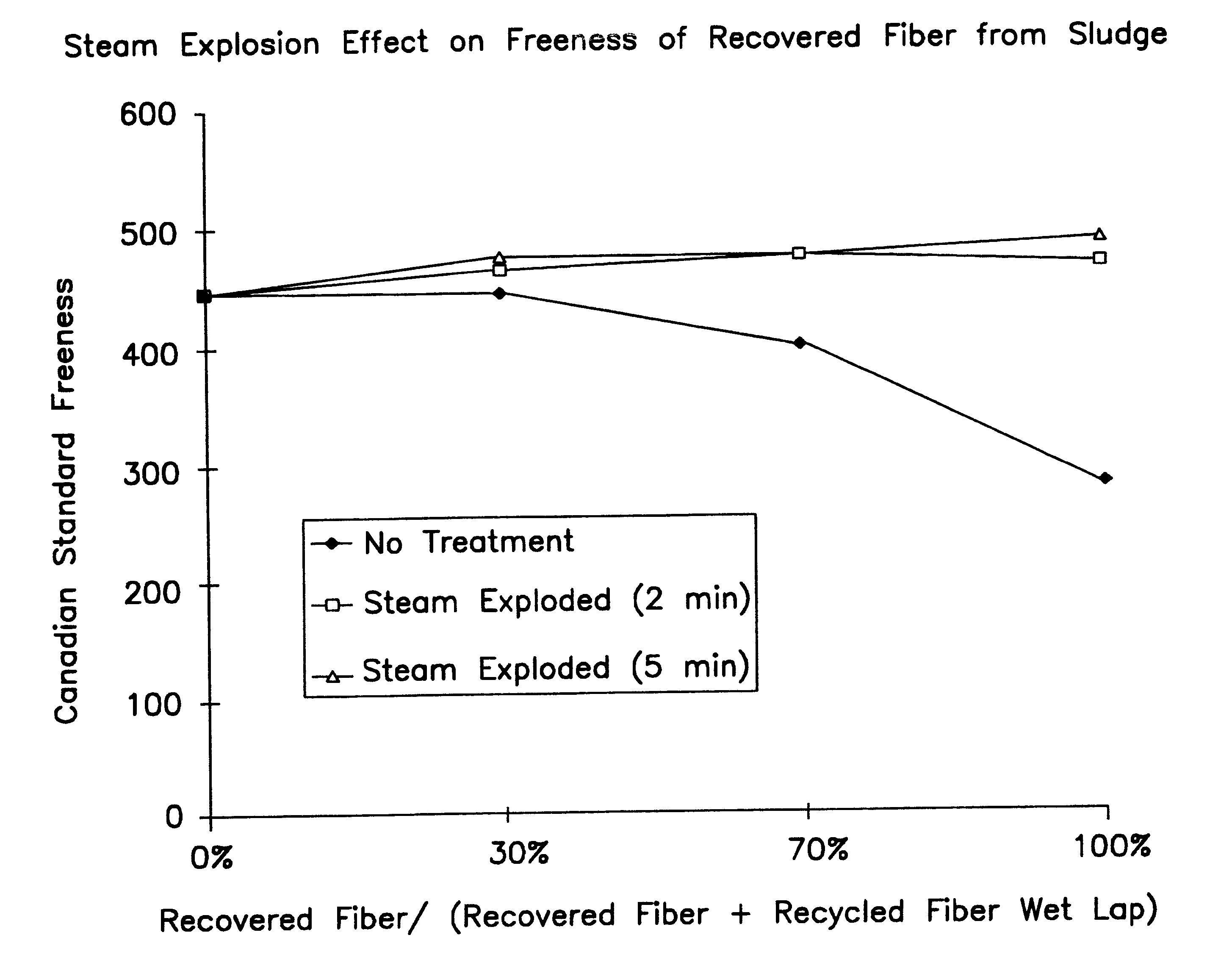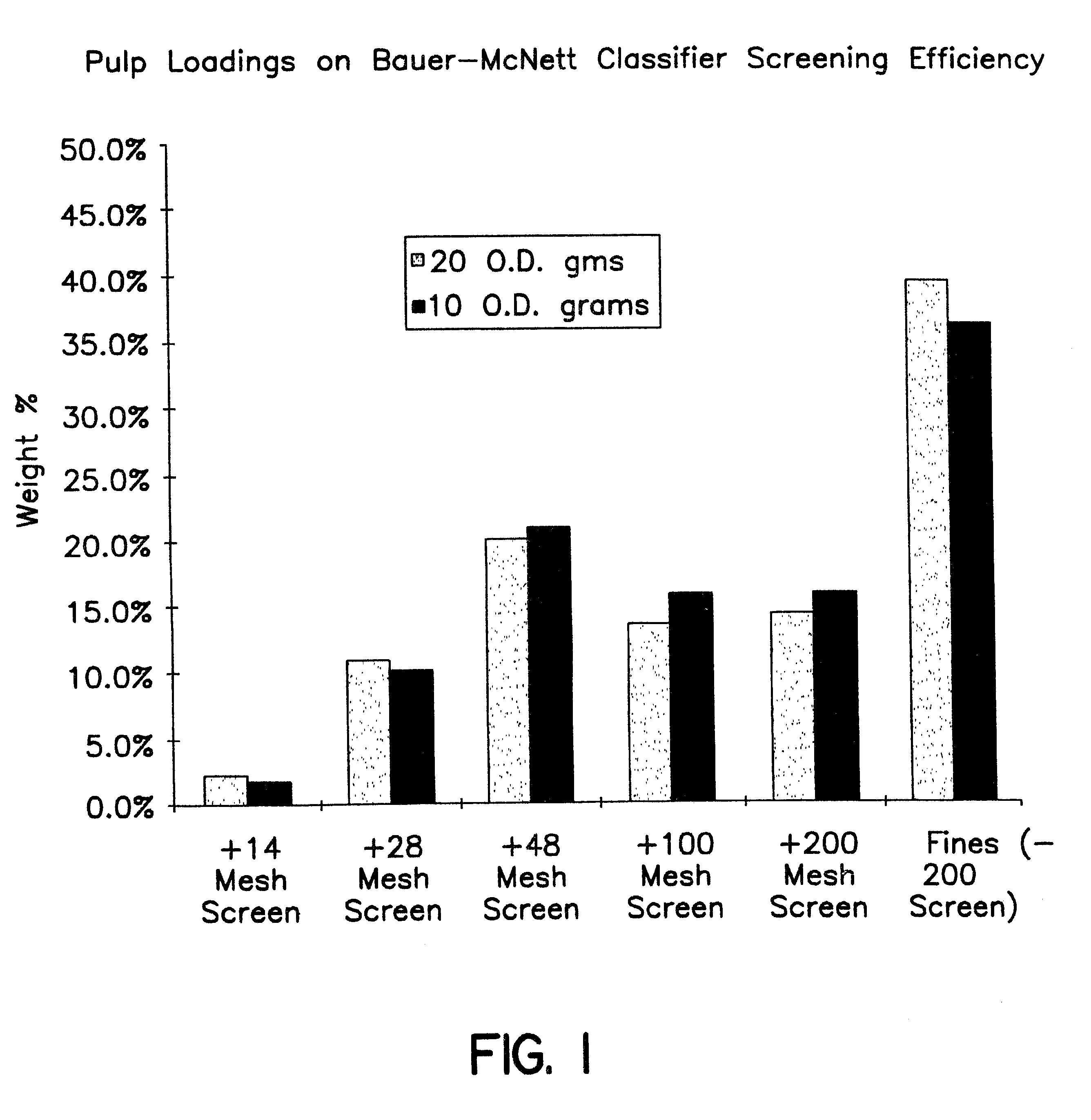Recovery of fibers from a fiber processing waste sludge
a technology of fiber processing and waste sludge, which is applied in paper recycling, textiles and papermaking, paper making, etc., can solve the problems of high ash content, low efficiency of paper fiber recovery plants, and limited efforts to recover fibers and fines from waste sludge streams
- Summary
- Abstract
- Description
- Claims
- Application Information
AI Technical Summary
Benefits of technology
Problems solved by technology
Method used
Image
Examples
example 1
Canadian Standard Freeness Measurements
The prepared handsheets were subjected to several tests, namely Canadian Standard Freeness values, burst index, tensile index, tensile stretch, tear index, and opacity.
As best seen in reference to Table 2 and FIG. 5, handsheets prepared from the fibers recovered following steam explosion of the sludge compare favorably at 30 percent, 70 percent and 100 percent loading levels to the control sheet of zero percent treated fibers with respect to the Canadian Standard Freeness values. Canadian Standard Freeness values were determined according to protocols established in TAPPI Test Methods T-227 OM-94.
Compared to untreated fibers, the treated 100 percent recovered fiber improved the freeness values from a value of 300 to between 470 to 490. It is believed that the improvement are the results of a decrease in the fine and ash content in the reclaimed fibers along with steam explosion induced changes in fiber morphology.
example 2
Burst Index of Handsheets
The burst index of the handsheets were determined in accordance with established protocols in TAPPI Test Method T 403 "Bursting Strength of Paper" and as further referenced in TAPPI 220-sp-96 procedure for Physical Testing of Pulp Handsheets.
As seen in Table 2 and in FIG. 6, the burst index of the handsheet using reclaimed fibers from treated sludge consistently exceeds the burst index of untreated sludge fibers.
example 3
Tensile Index Values of Handsheets
Tensile index of samples was calculated by dividing the sample tensile strength by the sample basis weight. Tensile strength refers to the maximum load or force (i.e., peak load) encountered while elongating the sample to break. The tensile strength was determined with an Instron Model 1122 Universal Test Instrument in accordance with Test Method TAPPI T 404 cm-82. Each sample was about 2.54 centimeters wide and the initial separation between the tester jaws prior to elongation was about 12.7 centimeters.
The tensile index properties of sheets having reclaimed fibers, as seen in FIG. 7, exceeds the values of the untreated sludge fibers.
PUM
| Property | Measurement | Unit |
|---|---|---|
| Pressure | aaaaa | aaaaa |
| Angle | aaaaa | aaaaa |
| Volume | aaaaa | aaaaa |
Abstract
Description
Claims
Application Information
 Login to View More
Login to View More - R&D
- Intellectual Property
- Life Sciences
- Materials
- Tech Scout
- Unparalleled Data Quality
- Higher Quality Content
- 60% Fewer Hallucinations
Browse by: Latest US Patents, China's latest patents, Technical Efficacy Thesaurus, Application Domain, Technology Topic, Popular Technical Reports.
© 2025 PatSnap. All rights reserved.Legal|Privacy policy|Modern Slavery Act Transparency Statement|Sitemap|About US| Contact US: help@patsnap.com



